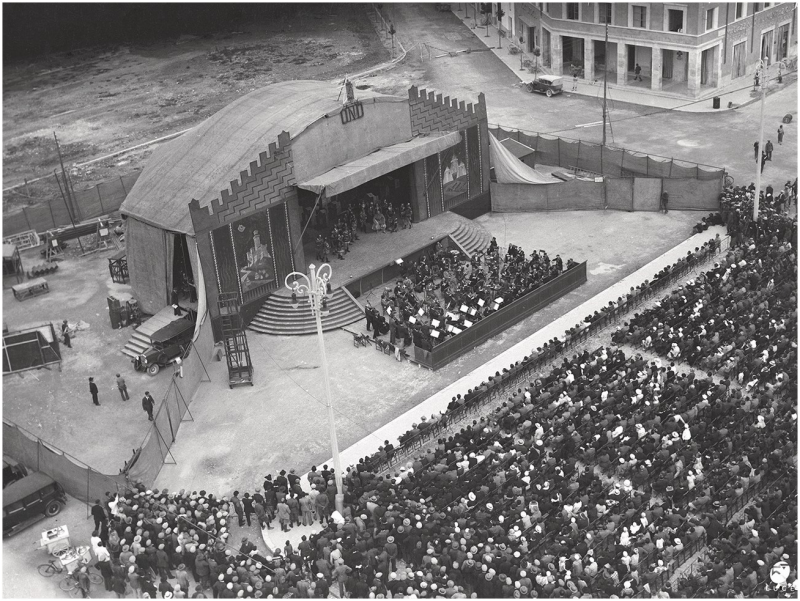
Theatre in Fascist Italy underwent significant changes as it became a tool for state propaganda under Benito Mussolini’s regime, like in Nazi Germany. Before Italy became fascist, Italian theatre was vibrant and futuristic. However, with the rise of fascism in the 1920s, the government began to assert strict control over cultural life, including the theatre. Mussolini recognized the power of performance to instill nationalist values, and as a result, theatrical productions were expected to align with the regime’s ideals of strength and militarism.
The central feature of Fascist theatre was the promotion of state-sponsored plays that glorified the regime and Benito Mussolini. Playwrights were often required to write works that celebrated Fascist ideology. In fact, many Italian playwrights would compare Benito Mussolini to the Roman Empire, and use acting to reinforce the image of Mussolini as a new Caesar.
At the same time, the regime also worked to suppress dissenting voices in the theatre world. The government would punish any playwrights that included any anti-fascist thoughts in their plays. This devastated the progress in progressive theater of Italy, because many plays were banned early in the process. Luigi Pirandello, one of Italy’s most famous playwrights of the time, initially supported the regime, but eventually faced internal conflict with the government’s increasing demands for conformity. His plays, such as Six Characters in Search of an Author, were complex and modernist.
Despite the regime’s tight control over the theatrical landscape, theatre as resistance persisted. Most playwrights used metaphors and subtle critiques of the Fascist regime to evade censorship. Today, the era of Fascist theatre is often looked back on in a critical way, because of its role as propaganda in those times. However, it also serves as a powerful example of how important performance is in these situations, and how big of an effect theatre can have.
Sources:
https://www.journals.uchicago.edu/doi/abs/10.1086/730028?journalCode=jmh
Add comment
Comments